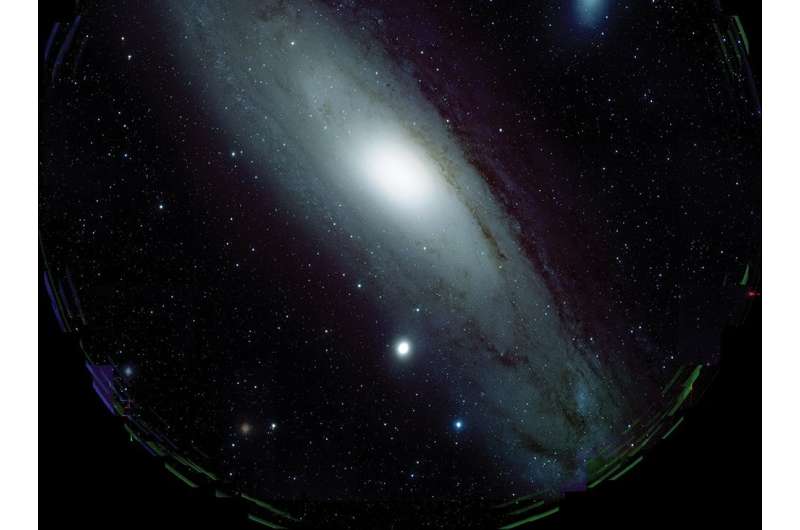On the hunt for primordial black holes

The theory that dark matter could be made of primordial black holes a fraction of a millimeter in size has been ruled out by a team of researchers led by the Kavli Institute for the Physics and Mathematics of the Universe (Kavli IPMU).
In 1974, physicist Stephen Hawking described how primordial black holes could have formed in the fraction of a second after the Big Bang. Primordial black holes could have masses ranging from a tiny speck to 100,000 times our sun. In contrast, supermassive black holes detected by astronomical observations started forming at least hundreds of thousands of years later, and are millions or billions times larger than our sun. Since primordial black holes of any size have not been detected, they have been an intriguing candidate for elusive dark matter.
As far as we currently know, baryonic matter only makes up 5 percent of all matter in the universe. The rest is either dark matter (27 percent) or dark energy (68 percent), both of which have not yet been physically detected. But researchers are confident that dark matter exists because we can see its effect on our universe. Without the gravitational force from dark matter, the stars in our Milky Way Galaxy would be flying apart.
To test the theory that primordial black holes, specifically those about the mass of the moon or less, could be dark matter, Kavli IPMU researchers Masahiro Takada, Naoki Yasuda, Hiroko Niikura and collaborators from Japan, India and the U.S. searched for these tiny black holes between Earth and the Andromeda Galaxy, the Milky Way's closest neighbor galaxy, 2.5 million light years away.

"What made me interested in this project was the tremendous impact it would have on uncovering the nature of dark matter," says Niikura. "Discovering primordial black holes would be a historical achievement. Even a negative result would be valuable information for researchers piecing together the scenario of how the universe began."
To look for black holes, the team used the gravitational lensing effect. Gravitational lenses were first explained by Albert Einstein, who said it was possible for an image of a distant object, such as a star, to become distorted due to the gravitational effect of a massive object between the star and Earth. The massive object's gravity could act like a magnifying glass lens, bending the star's light and making it appear brighter or distorted to human observers on Earth.
Because a star, a black hole and the Earth are constantly moving in interstellar space, a star would gradually grow brighter, then dimmer to observers on Earth, as it moves across the path of a gravitational lens. So the researchers captured 190 consecutive images of the entire Andromeda Galaxy, thanks to the Hyper Suprime-Cam digital camera on the Subaru Telescope in Hawaii. If dark matter is made of primordial black holes and, in this case, ones lighter than the moon, the researchers expected to find 1,000 gravitational microlenses. They calculated this estimate by assuming dark matter in the entire galaxy's halo is made up of primordial black holes, and taking into consideration the number of stars in the Andromeda Galaxy that could be affected by a primordial black hole, and finally the chances of their equipment capturing a gravitational microlens event.
The telescope photographed 90 million stars. It took two years for the team to filter out all of the noise and non-gravitational lens events from the data. In the end, they could only identify one star that brightened then dimmed—suggesting a possible primordial black hole—meaning it is unlikely that they make up all of dark matter.
Even so, Niikura explains that there is still a lot to learn about primordial black holes. The researchers had only debunked the theory for a specific mass: black holes with a mass similar to or less than the moon. Previous studies have ruled out other masses, or to what extent they could account for dark matter. But there is still a chance that primordial black holes of varying sizes might be out there. The analytical approach developed by the Kavli team could be used in future primordial black hole studies, including trying to determine if black holes discovered by the Laser Interferometer Gravitational Wave-Observatory (LIGO) in the U.S. could in fact be primordial.
Provided by University of Tokyo





















